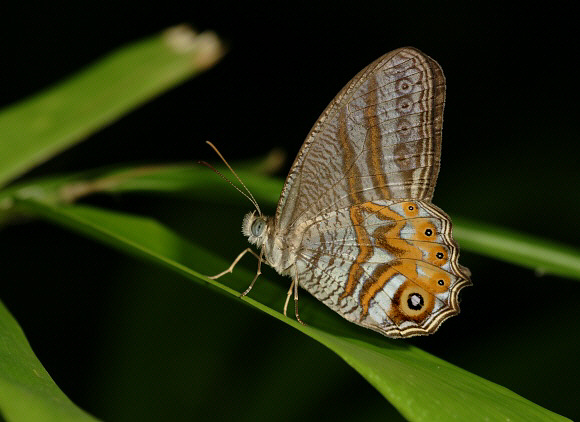
Introduction
There are 5 members of this attractive genus variously found in Myanmar, Thailand, Laos, Vietnam, West Malaysia, Singapore, Sumatra, Borneo and Java.
Erites are a group of scarce, localised and elusive butterflies, of which elegans is the rarest species in Malaysia. It also occurs in Sumatra and Borneo where it is equally scarce.
Habitats
This species is found in primary rainforest at elevations below about 300 metres. It seems to occur close to streams or tributaries, and is most often encountered in the rainy season.
Lifecycle
The lifecycle of all Erites species is unknown but it is possible to make educated guesses based on related genera : The eggs for example will almost certainly be spherical with a flattened base, and are likely to be laid singly on leaves of the foodplant. The larva will be green or brown, and almost certainly will be marked with thin dark lines running the length of the back and sides. It’s head will be adorned with a pair of short curved horns, and there will be a pair of caudal prongs on the anal segment. Like all Satyrines it will be a crepuscular or nocturnal feeder, and the larval foodplant will be some kind of monocotyledon. Erites are deep forest butterflies so palms or bamboos are more likely as foodplants than grasses.
Adult behaviour
The butterflies are rare and very localised, but normally if one is found there will be several others nearby. This tends to indicate that the larval foodplant is a scarce and localised plant, as the insect would otherwise be more evenly distributed in the forest.
Both sexes are in the words of Corbet & Pendlebury ” feeble in flight and furtive in habit”. They are only active for short periods, and seemingly favour overcast humid conditions. My experience is that they congregate around a particular specimen of ( unidentified ) palm, where individual males will sit for for several minutes at a time on a chosen leaf, and that if disturbed they return to the same leaf as soon as they sense it is safe to do so. Half an hour later however they will be nowhere to be seen, and no amount of trampling around in the undergrowth will arouse them, indicating that they probably migrate to and from these places during the course of the day.
